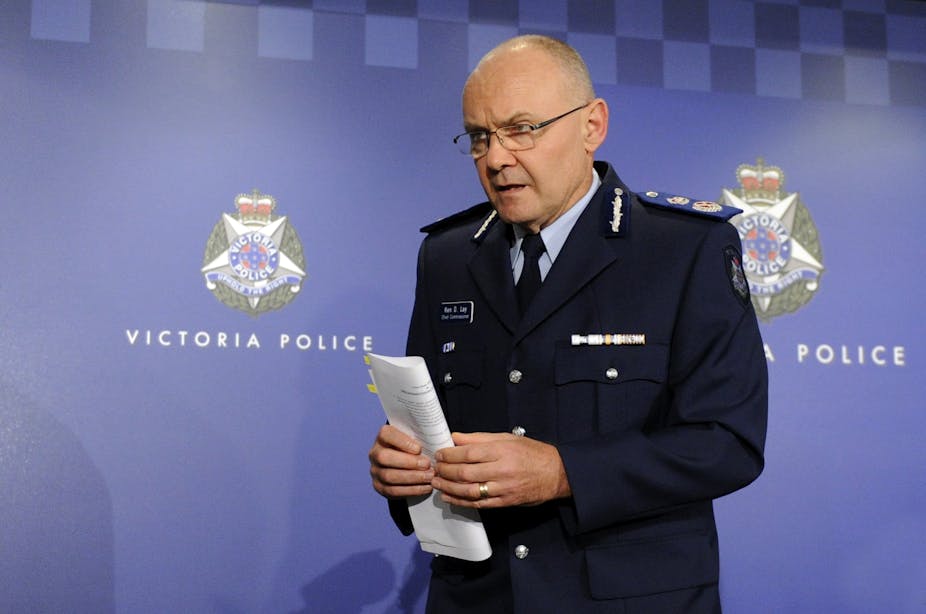Victoria Police recently announced an inquiry into their public relations and cultural awareness training, after a group of young African Australians claimed they had been victims of over-policing and racial profiling. Only a few days earlier, the State Coroner requested that police reinvestigate the death of a young Ethiopian Australian, Michael Atakelt, in Melbourne’s western suburbs in 2011 .
Many Australians of African backgrounds are visibly different. By this I mean they stand out due to attributes that can include colour, dress and name. Like another group of visibly different migrants, Indian students, they have also become targets of discrimination at the hands of Victoria Police.
During the investigation into Michael Atakelt’s death, members of the Australian Ethiopian community expressed a genuine lack of trust in the actions of Victoria Police. Representatives of Muslim communities are echoing the complaints made by African Australians about racial profiling and over-policing. These examples are evidence of institutional racism within the police force. Far from being one-off incidents or exceptions to the rule, increasingly these cases help us obtain a picture of how racism is felt by those that are “visibly different”. Such incidents will come as no surprise to Indigenous Australians, particularly young men, who face similar discrimination and racism.
When Victorian Police Commissioner Ken Lay announced the public inquiry into police practices, he spoke of “these communities” as if somehow African Australians existed in isolation from the “rest of Australia”. His words, rather than his actions, indicate that until we open our eyes and accept the diversity within Australian society, real and meaningful social inclusion will never happen.
As a nation, Australia is enriched economically, socially and culturally by successive waves of migrants and refugees. Our immigration program is lauded as a secret to our nation’s success and an invaluable asset.
But despite Australia’s relatively successful model of multiculturalism, and migrant and refugee settlement, recent reports of systemic racism within the Victorian police force including racial profiling of African Australians, highlight unacceptable gaps in the rights and treatment of Australian residents and citizens of African backgrounds.
So who are Australia’s African communities? Australia’s African communities are comprised of highly diverse linguistic, cultural and religious groups who have been settling in Australia on permanent and temporary bases as skilled migrants and refugees over many decades. Department of Immigration and Citizenship figures cited in a 2011 Joint Standing Committee on Foreign Affairs, Defence and Trade inquiry report, indicated that there were 248,699 African-born people living in Australia who had arrived under both the migrant and humanitarian programs.
A significant proportion of the African-born community originate from South Africa, the sixth-largest source country for temporary migrants. Many others are former refugees from the Democratic Republic of Congo, Sudan, Ethiopia, and Eritrea and Somalia, and to a lesser extent Burundi, Congo, Guinea, Liberia and Sierra Leone. It is questionable whether subsuming such broad diversity under the label “African Australian”, reflects the multiple communities of people from African backgrounds who reside here.
In 2010, the Australian Human Rights Commission conducted a major report into human rights and social inclusion issues facing African Australians. They found African Australians experienced significant discrimination when seeking employment and finding housing that in turn led to social exclusion. Community leaders like Dr Berhan Ahmed, of the African Think Tank, have called for wider action against racism, as have the young men involved in this case. The Human Rights Commission has also launched a major public anti-racism campaign.
Nonetheless, racist attitudes in Australia remain pervasive. Without diminishing the injury felt by Australians of African backgrounds at the hands of police, outrage about racism and discrimination should be given a wide focus. Indeed laying bare the harm caused by systemic racism and discrimination should extend to other institutions and social spheres.
We should start by asking what we can do to support Australians of African backgrounds achieve the social inclusion they strive for. This includes celebrating achievement and acknowledging success. Greater effort is needed to ensure that institutions including the police force reflect Australia’s multicultural composition.
By reducing Australians of African backgrounds to narrow stereotypes based primarily on their appearance, we all lose. Instead, we should be harnessing the immense economic, social and cultural potential of our African Australian communities as much as we can. It begins with challenging our perceptions and responding to new arrivals with understanding rather than a heavy-hand.

